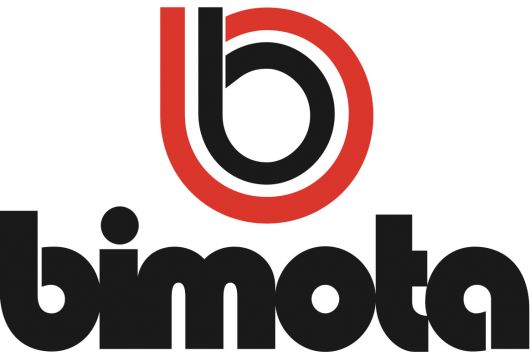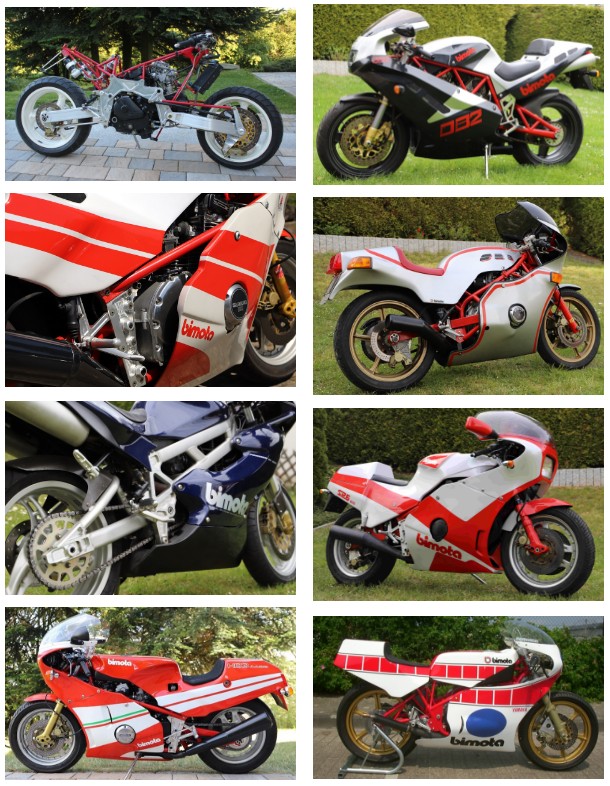Short-Term Successes
At the conclusion of the insolvency proceedings, Bimota is auctioned off for approximately 2.3 million euros to the company Alternativa Moto from Padua. Behind this company are Giuseppe Della Pietra, who joined Bimota as managing director in 1999, and Lorenzo Ducati. However, by 2003, they sold Bimota to Milanese entrepreneur Roberto Comini without having launched a new model. With Comini, the company gains sufficient capital for a fresh start.
But how does Bimota position itself in the market? Its rise in the late 1970s was based on producing stable and beautifully crafted tubular frame chassis in limited numbers for powerful Japanese four-cylinder engines. However, by the 1990s, the era in which companies could differentiate themselves through innovative frame and chassis solutions had come to an end. As a result, Bimota focuses on its core brand values: exclusivity, design, craftsmanship, and the use of high-quality materials and components.
Under the technical direction of Alberto Strada and with Sergio Robbiano -a designer who previously worked under Tamburini at Cagiva -the product lineup is expanded with three projects. First, the SB8K, which achieved Bimota’s last major sporting success in the Superbike World Championship in 2000, is reintroduced as special editions Gobert (named after rider Anthony Gobert) and Santamonica. At the same time, they offer the Tesi 2D, a model with hub-center steering based on the Tesi 1D and further developed by the company Vyrus. However, the most important project is the development of an entirely new motorcycle, the DB5, which is presented at the Intermot in Munich at the end of 2004.
By mid-2005, Bimota employs 20 people once again, and by 2008, production rises to 400 motorcycles, which are also successfully sold. In 2007, Andrea Acquaviva takes over technical leadership, and Enrico Borgesan is responsible for design. However, instead of continuing to grow, production figures drop drastically. By 2010, fewer than 200 motorcycles are produced, and the new models launched after 2010 fail to improve the situation. The last project under Comini’s leadership is an agreement with BMW to supply the powertrain from the supersport model S 1000 RR. However, before its completion, Comini sells the company in September 2013 to Swiss real estate entrepreneurs Marco Chiancianesi and Daniele Longoni.
The new owners aim to return to former strengths, both in sports by entering the Superbike World Championship and economically by planning to produce 600 motorcycles per year. However, their sporting ambitions end with a disqualification for regulatory violations, and production of the new BB3 stalls due to financial difficulties. In 2015, the Swiss owners bring Pier Luigi Marconi back to Bimota. The models developed under his leadership, including a new Tesi and a Streetfighter presented at the Milan motorcycle show EICMA 2015, never enter production. Marconi leaves the company shortly thereafter.
In 2017, the old factory at Via Giaccaglia 38, still owned by Comini and only rented, is abandoned. Bimota moves to much smaller premises nearby at Via Emilia Mariani 8. According to Chiancianesi, the new 200 sqm space will be used to produce „refined motorcycles,“ „true one-offs,“ and „luxurious bikes,“ as he stated in an interview with the German Motorrad magazine. Unfortunately, these remain mere announcements. No new models are developed, and by 2019, only about 2,000 additional motorcycles are produced, bringing the total to approximately 14,000 since Bimota’s founding in 2000.
As of January 1, 2024, according to Germany’s Federal Motor Transport Authority, there are 1,014 registered Bimotas in the country, including models produced after 2000. In comparison, there are over 630,000 BMWs and over 100,000 Ducatis registered, meaning there is one Bimota for every 630 BMWs or 100 Ducatis. This underscores the exclusivity of the Bimota brand. Considering that Bimotas are more likely to be collected, cherished, and maintained than ridden, any encounter with a Bimota on the road is a rare event.
Incidentally, of the roughly 1,000 Bimotas registered in Germany, only five are owned by individuals under the age of 30

